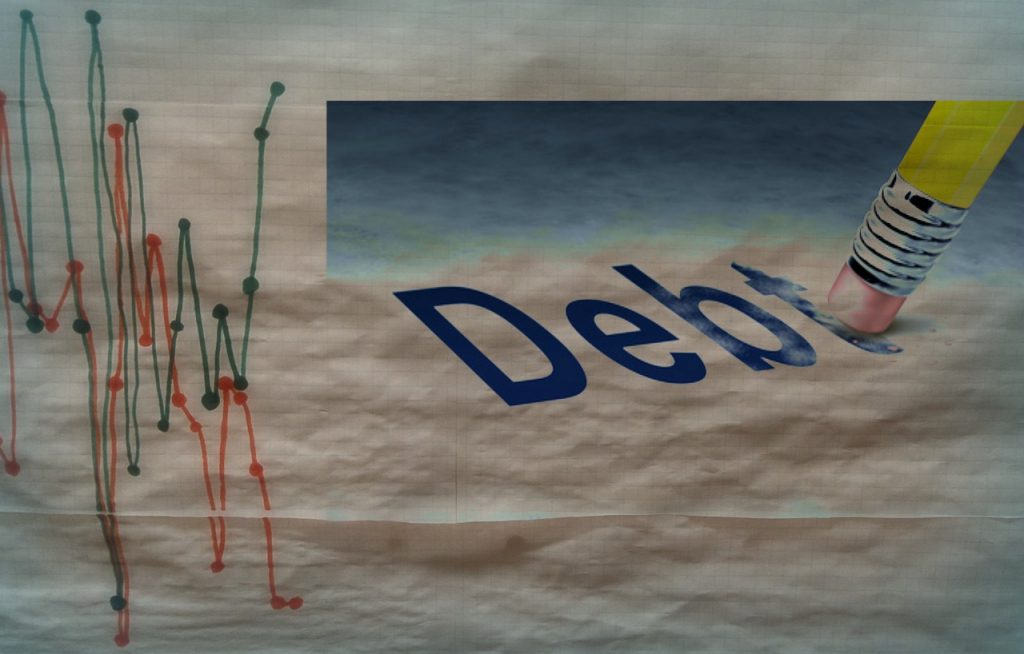Almost 3 years ago now, we became a blended family of 7. This was a huge lifestyle change for all of us, but one we are glad we decided to make. However, with this blended household, came some blended debt. We had to sit down and take a really hard look at our finances and figure out how we could knock out this debt, as quickly and efficiently, as possible.
budget spreadsheet
First things first was the budget spreadsheet. I have been keeping one since 2002, and it has really helped me in dire times of need. I realize not everybody is on the budget train, but when you find what works for you, you stick with it.
My spouse had never been a part of a budget before, so this was new territory for him. But, once we had our first talk and I gave him an in depth walk through of how mine is laid out, he seemed to breathe a little bit easier.
The way we track our expenses is broken down into specific categories. This way we can quickly, and easily, see which categories we are struggling with and self correct before it gets out of control. These 8 categories are:
- Automobile Expenses – this includes car payments, insurance, gas, tolls and maintenance
- Food/Beverage – this includes any food, drinks or alcohol we purchase for use at home
- Bills – regular recurring monthly bills, like the mortgage, cell phones, homeowner’s insurance, utilities, etc.
- Household – this includes anything we purchase for the house, such as toiletries, pool products, anything to fix up the house
- Clothing – this one seems self explanatory
- Luxury – anything that is a want and not a need, such as going out to dinner or vacations
- Gifts – this includes birthday, holiday and special occasion gifts for our family or anybody else
- Misc – this is the catch all for anything else random, such as school fees for field trips or stamps
Once we got the hang of putting our joint expenses and income into this spreadsheet, it became easier to see where our deficiencies were. Then we moved on to creating another spreadsheet for all of the debts.
Debt spreadsheet
I realize that the average American currently carries around $38,000 in personal debt, but we don’t want to be a part of that statistic. Therefore, we wanted to figure out how to knock out as much of our debt as quickly as we could.
First things first, we pulled our free annual credit report to see what debts were tied to our names. We found that we had things like:
- mortgage
- car loans
- credit card debt
- student loans
- bills in collection that neither of us even knew about (some of which were accrued by a previous spouse, unbeknownst to us)
At first, this was extremely daunting to see and could have been one of those things that could make a person throw up their hands and say “forget it!” But, I like to attack things head on and come up with an actionable game plan to change the situation. And this time was no different. Hence, it was time to create another spreadsheet (which I LOVE to do!).
Enter the debt spreadsheet! I input all of this information to make things easier to see and breakdown:
- Creditor
- Account Number
- Joint or Individual
- Total Amount Owed
- Current Amount Left
- Other Info
- When Payments Occur
The majority of these didn’t have interest rates associated with them, so for the few that did, I entered that information in the “Other Info” category. This made it easier to use the debt snowball method, as opposed to the debt avalanche method, because we weren’t looking at interest rates.
the plan
Once we had all of the information regarding our budget and our debt, we created a plan. The plan was simple.
We would start by calling all of the accounts on the debt spreadsheet to get a current amount due first. Once that was done, we scheduled payments for the minimum amount due to stop collections on all accounts, except for the account with the lowest balance.
Next, we contacted the account with the lowest balance to negotiate and see if there was any wiggle room to reduce the balance, if we agreed to pay it off in one fail swoop or two payments. This tactic is one that works extremely well when accounts are in collections, because they just want to get paid something, anything really.
There were originally 9 accounts on this list in default. But in less than 2 years, we were able to negotiate all of them down to anywhere from 30 – 50% below what was originally owed and pay them all off. The only thing left on this list now is a federal student loan that is currently in forbearance and will hopefully stay there for a few more years. So this one isn’t affecting our credit any more.
moving
The next thing we did was realize that our house was just too small for the 7 of us, as it was one I bought when I was 22 and single and ran a little over 1000 sq. ft. Instead of taking on another loan to add on to the house, I decided to sell. The market in our area has been really good for a while, so I knew that I could make a decent profit. Especially since I bought my house 15 years prior for very little money, and had fully renovated the house throughout that time.
So, 7 months into our debt repayment journey, we put the house on the market and it sold in 6 days. We found our new house about 5 minutes up the road, that was almost double the size, but I paid less than what I sold my other house for. Therefore, I was able to pay off:
- the old mortgage
- my car loan
- the rest of my student loan from my Master’s degree
- the little bit that was left from a home renovation loan
Plus, I put almost 50% down on the new house, so our new mortgage was only slightly more than the old mortgage. This translates to our mortgage being approximately 14% of our income, so we are well under what most American’s spend on housing.
what’s left
Overall, we have been on this journey for 2 1/2 of the almost 3 years we have been a blended family. The only things we have left now are one car loan, that we just refinanced for a MUCH lower interest rate (and plan to get paid off by the end of this year), and the mortgage.
I don’t know about you, but we feel pretty darn good about how fast we were able to move and get this debt knocked out. Now to get the last two big debts paid off so that we can really start investing our money like crazy, and hopefully, retire early.









Congrats on all the progress! Though I’m surprised you didn’t just pay the mortgage in full and use what was left toward the other debts that were remaining. Did that have to do with interest rates or just comfort level?
Thank you! Well, we didn’t pay the mortgage in full because we still owe $122k on it and it is solely in my name and not my spouses. The debt he was paying off was marital debt from his previous marriage, not mine. I paid off all of my marital debt prior to our meeting and we both agreed that it wouldn’t be fair for me to pay off his marital debt since I had nothing to do with it. Plus, almost all of his debt was in collections so it needed to be dealt with first to get collections to stop and repair his credit. Now that it has been resolved, we are working on paying off his car that we both got together and then the house will be next, because it is the lower interest rate of the two.